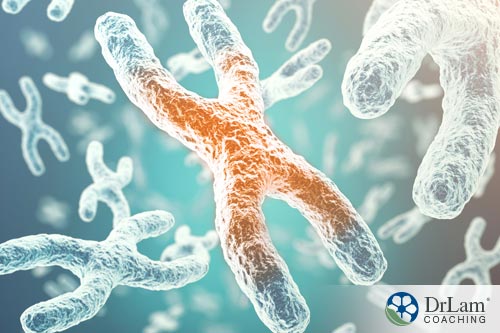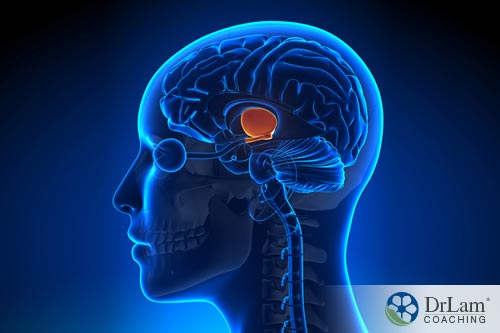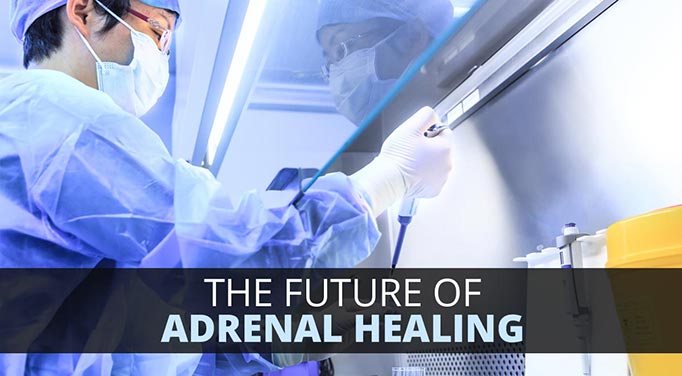 One area of research that affects everyone is in the area of aging. Everyone will age. The use of stem cells to slow the aging process and the physical changes that come with it is a promising area of research. It is also one area that has gotten a great deal of attention from those involved with stem cells.
One area of research that affects everyone is in the area of aging. Everyone will age. The use of stem cells to slow the aging process and the physical changes that come with it is a promising area of research. It is also one area that has gotten a great deal of attention from those involved with stem cells.
Signs of aging have been said to occur at the level of somatic stem cells. In this regard, a person can be considered as old as their stem cells. This is because the ability of an organism to replenish its cells through its stem cells is a measure of age.
The process of aging is not well understood. Several theories have emerged to explain and deal with aging. One of these has to do with telomeres shortening with each cell division until they are depleted. Another deals with DNA damage in cells. Another has to do with epigenetic changes in transcriptional regulation.
One current theory relates to stem cells. This theory postulates that aging is due to the depletion of stem cells or their failure to differentiate.
Studying stem cells in relation to aging is a relatively new area of research. Hemopoietic stem cells are most often researched in this area because they tend to differentiate until the organism dies. In addition, they continue replicating themselves for this same time period.
Due to the changes that occur as you age, conditions become more common such as reduction in cellularity of bone marrow, increases in anemias, reduction in lymphopoiesis, and an increase in abnormalities like malignancies, myelodysplastic syndromes, and myeloproliferative conditions. Changes also can occur in hemopoietic cells. There may either be a reduction in the number of such cells or abnormalities in differentiation. Research indicates the number of these cells increases in humans with age, so the difficulties in differentiation are more prevalent.
Mesenchymal stem cells are another type of these cells. They are rare, found in bone marrow and adipose tissue. These multipotent cells have been found to remain in good supply in mice as they age. However, their ability to self-regenerate and to develop bone formation drops significantly with age.
Skin-derived precursor stem cells are another type of these cells. They are found in the dermal papillae of hair follicles. They are different from epidermal skin cells. These skin-derived precursor cells are dramatically affected by aging in both number and ability to differentiate. On the other hand, epidermal stem cells do not appear to be affected by aging. They continue to be numerous and able to differentiate as they age.
 Telomeres are short strands of DNA attached to the ends of chromosomes to protect them from degradation following cell division. These ‘end caps’ shorten microscopically with each cell division. This shortening of telomeres is hypothesized to be an explanation for aging. Once the telomeres become critically short, the cell they protect degrades and dies.
Telomeres are short strands of DNA attached to the ends of chromosomes to protect them from degradation following cell division. These ‘end caps’ shorten microscopically with each cell division. This shortening of telomeres is hypothesized to be an explanation for aging. Once the telomeres become critically short, the cell they protect degrades and dies.
One reason stem cells are studied with regard to telomeres is that they contain an enzyme called telomerase that can lengthen telomeres. The action of telomerase to lengthen telomeres is the key to the ability of stem cells to continue almost indefinitely to replicate themselves.
Stem cells are also capable of reproducing a close duplicate of the cells targeted. This includes the DNA in the cell. Doing this with these cells allows duplication of telomeres with a longer length and thus longer life. A potential effect of this process would be longer life for the individual in whom the process takes place.
Logically, this would seem to be a very beneficial situation. Longer telomeres would seem to be more stable and prolong the life of the cell. But recent research has shown it isn’t always so.
Recent research from the Salk Institute showed these longer telomeres to actually be less stable. Forcing boosted telomerase activity to generate longer telomeres increased the fragility of the telomeres. This could potentially increase the risk of developing cancer. The finding seemed to call into question the accepted belief that lengthening telomeres could lead to increased longevity and better health in humans.
A significant benefit of this research has been insight into the reprogramming of stem cells. This insight can lead to more understanding of ways stem cells can be utilized in regenerative applications.
 Another avenue of research that scientists believe may be able to increase longevity involves using stem cells in the hypothalamus. Researchers at the Albert Einstein College of Medicine in New York have concluded that the hypothalamus plays a major role in the aging of the human body.
Another avenue of research that scientists believe may be able to increase longevity involves using stem cells in the hypothalamus. Researchers at the Albert Einstein College of Medicine in New York have concluded that the hypothalamus plays a major role in the aging of the human body.
These researchers have discovered the exact cells that control the aging process. These are believed to be neural stem cells, which are also implicated in neurogenesis, or the generation of new neurons in the brain.
In their studies, the researchers found the number of stem cells in the hypothalamus declines with age, having a significant influence on the rate of aging. The more important finding of this research has to do with the fact that this process of aging can be changed.
Their research showed that replenishing the number of these neural stem cells in the hypothalamus with other neural stem cells either slows, or in some cases, reverses aging.
The researchers had first to determine whether the loss of the cells in the hypothalamus actually caused faster aging or if it was simply a correlative effect. In doing this, they decreased the number of these cells in middle-aged mice, and they found these mice aged much faster than their cohorts who had been left alone. This strongly suggested a causative effect and not just a correlative effect.
Then the researchers inserted fresh neural stem cells into the hypothalamus’ of the mice whose cells had been decreased and those of the mice who had been left alone. All of the mice showed at least a slowing of the aging process, and, in some cases, a reversal of the process.
The researchers found the stem cells released a molecule called microRNA, contained in exosomes, and involved in regulating gene expression. The exosomes are particles released into cerebrospinal fluid by the stem cells.
Researchers injected these exosomes into the mice’s cerebrospinal fluid and watched them as they acted.
The effects of the injected exosomes were evaluated by tissue analysis of the mice involved. The researchers also evaluated the mice’s social behavior, cognitive abilities, and endurance, along with other factors, to determine total effects.
While this process has not been utilized on humans, the results appear promising for future uses of neural stem cells in slowing aging.
 One possible area for the use of stem cells in the future is the remediation of illnesses associated with chronic stress, such as Adrenal Fatigue Syndrome (AFS), which are becoming increasingly common in our high-stress culture.
One possible area for the use of stem cells in the future is the remediation of illnesses associated with chronic stress, such as Adrenal Fatigue Syndrome (AFS), which are becoming increasingly common in our high-stress culture.
AFS is the condition that can result from constant stress on your body. Any kind of stress will lead to the activation of the hypothalamic-pituitary-adrenal (HPA) axis. The end result of this stimulation is the secretion of cortisol by the adrenals to fight the effects of stress. Ideally, once the stress is gone, the adrenals return to a state of homeostasis and rest. If the stress continues, however, the burden placed on the adrenals can result in exhaustion of the organs. This sets in motion a series of symptoms that can lead to sufferers being bedridden.
Unfortunately, conventionally trained healthcare professionals are not prepared to adequately deal with this condition, if they even recognize it. They use remediation efforts targeted at dealing with individual symptoms or single organs. A more comprehensive viewpoint for dealing with AFS is the NeuroEndoMetabolic (NEM) Stress Response approach. This method postulates there are six organ systems that act in an inter-related manner in the face of stress. What affects one of these systems affects one or more of the others. This allows for more effective and efficient assessment and remediation of AFS symptoms.
Regarding stem cells and AFS, it seems logical that these cells could be used to replace exhausted adrenal cells to increase cortisol production when needed. Also, the effects of the symptoms of AFS include damage to other organs and organ systems. This damage could be addressed with stem cells to repair or replace even entire organs. This is a theoretical construct at this time, however.
Stress itself also affects these cells in negative ways. For example, in the face of chronic infections, as can be seen in later stages of AFS, hematopoietic stem cells found in bone marrow are stimulated to leave their normally dormant state and become active. This forces these cells very quickly to go from a dormant state to very increased activity. This accelerates their metabolism, synthesizes DNA, and pushes them into dividing quickly. All of this forced activity increases the risk of problems developing.
One of the potential problems that may occur is changes in the DNA of the cells. Increased stress leads to the dramatic increase in metabolism, which then leads to more production of DNA damaging reactive metabolites. If this production comes at the same time as replication of DNA in the cell, it may result in carcinogenic mutations or even cell death.
Stem cells tend to respond to stress in much the same way as the adrenals. Under normal conditions, they are typically able to correct the damage that comes from stress. But with continuing stress, they become less efficient in this correction and may mutate or die.
The uniqueness of stem cells makes them vulnerable to stress and leads to some of the impact stress can have on them. Damage caused by stress prompts stem cell division to replace damaged cells. In addition, stresses, cytokines, and growth factors stimulate differentiation. Thus, many of the pathways that modulate self-renewal and differentiation are also stress pathways. The ability of stem cells to live a long time and divide over and over also leads to the potential for cancer formation. Specific responses to stress such as apoptosis and cell aging act to counter the formation of cancers. Aging acts as a stress on these cells.
Because of their necessary roles and the possibility of cancers resulting from long-term cell division in these cells, stress reduction is a necessity. Several features of these cells serve as anti-stress and anti-transformation mechanisms. The locations of stem cells in the body have a protective role; these locations work to protect them from outside stress. For some of these cells, the niche in which they reside is hypoxic, negating oxidative stresses. Also, these cells have improved repair and stress response pathways along with increased mechanisms for removal of toxins.
© Copyright 2018 Michael Lam, M.D. All Rights Reserved.

